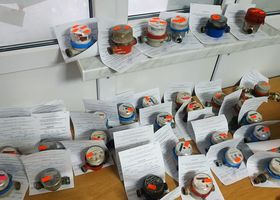Electricity market opening in Ukraine; is the D-day coming?
According to the Law of Ukraine "On the Electricity Market" (13.04.2017 № 2019-VIII), as of 1 July 2019, the Ukrainian wholesale electricity market should open up for competition and function in line with the Third Energy Package principles.

This means that in few days, Ukrainian electricity market participants will be able to freely buy and sell electricity on bilateral basis, on organized day-ahead and intraday markets and offer capacities and balancing energy at the balancing market on purely commercial terms. The monopoly of the state company Energorynok that is now mandatorily purchasing all electricity produced in Ukraine for a price, set administratively by the Regulator, will be abolished.
Much has been done to come to this point. During 2017-2018, major legislative pieces implementing the new, liberal market model were adopted. In January 2019, a competitive retail market was launched and market participants have been preparing for the D-day. However, despite all efforts, many remain sceptical about the market participants’ readiness for a free wholesale market.
This scepticism and uncertainty is manifested in recent public statements of heavy weight institutions like the National Security and Defence Council and several legislative attempts in the Ukrainian parliament - none of them successful – aiming at postponing the market opening with few months. However, because of the upcoming parliamentary elections and the ongoing election campaign, adoption of any law sanctioning the market opening postponement is unlikely.
So what is the problem, why isn’t all ready and set for the new market model launch? There are two aspects of the problem. The first is the institutional and organisational aspect. For the model to work properly, market participants, especially Ukrenergo (TSO) and Energorynok (MO) must develop and adopt processes for efficient data exchange, acquire and deploy new software systems and attune to the logic of the new market. Some market players (distribution companies, TSO, selected electricity producers) must also deal with the public service obligations (PSO) imposed on them by the Law. This is not an easy task and there are signals that neither IT nor organisational challenges are solved yet. Question marks hang over consumption data metering and balancing, for example. It is clear that without being able to efficiently measure physical imbalances, match them against contracted (nominated) volumes and settle the differences physically and commercially, the system cannot work. On top of all these problems, there are unresolved problems stemming from the retail market opening back in January 2019.
The other aspect that causes concerns and speak in favour of postponement of the market launch is the electricity price aspect. Nobody knows what the future electricity price might look like once Enegorynok ceases to purchase electricity from producers at pre-established prices (currently at 1722 UAH/MWh, excl. VAT[1] which is comparable to the peak-load prices for 1Q 2019 at PXE). Ukraine is a closed market with limited cross-border transmission capacities (towards western neighbours) and so far poor track-record in electricity imports. It is not possible to set the EEX price as a reference price, for example. For this reason, there are concerns of a steep price hike and possible market manipulation.
It is no surprise that the closer the market opening is, the more efforts to limit the possible price volatility we have seen. In fact, a price cap for some segments have already been introduced. In the beginning of June 2019, the Government adopted two documents (Procedure Nr. 499/2019 and Procedure Nr. 483/2019) that effectively limit the possibility of state-owned companies to freely initiate and execute bilateral sell-purchase contracts. Bilateral trading will need to be processed through an electronic auction platform. During the first six months from the market opening (that is until December 2019) Energoatom will need to sell at least 85% of its base-load schedule for a price corresponding to average off peak price valid during the last three months before the market opening. Considering that Energoatom stands for slightly more than 50% of the overall Ukrainian production (ca. 84 TWh out of overall ca. 159 TWh in 2018) this is a considerable limitation placed upon the OTC market. To note is that on top of this, Energoatom and Ukrhydroenergo will also need to sell electricity through special auctions where TSO and DSOs can purchase electricity for technical losses and universal service suppliers electricity for household and SME supplies (as the supply price for these consumers is regulated/capped). Price at the special auction cannot exceed the average weighted price prevalent during three last months before the market opening.
The same approach is likely to be applied to the DAM and IDM markets. NEURC, the Ukrainian Regulator is currently finalizing the latest round of amendments to the Market Rules for DAM/IDM and intends to place an hourly price cap for the DAM and IDM orders. Given that the Law requires producers to sell maximum 15% of the overall production at DAM/IDM (the exact minimum value is set by the Regulator and as far we know, the value has not been set yet) this too will have an impact on the market and the final wholesale market price.
Considering the above, it is fair to say that more than 50% of the overall electricity production will be in the first six month sold at a regulated price. Energoatom will sell majority of the electricity produced for a pre-established price. Ukrhydroenergo must primarily cover the needs of Universal Service Suppliers and technical losses for TSO and DSOs through participation in special auctions. Not much electricity may then be left to sell at the free market. It looks like the thermal power plants for which no price restrictions apply (save the DAM/IDM limitations and Centrenergo’s obligation to sell via OTC platform for a capped price), will become the electricity price arbiter. Thermal power plants cover slightly more than 1/3 of the overall Ukrainian electricity production (37% in 2018) and are predominantly owned by private investors (with some minority Government shares), mainly DTEK holding.[2] If the demand level remains stable and some given share of consumers will need to purchase electricity from the thermal power plant production (because no import possibility), the only price limiting factor for these producers is likely to be the imbalance price (price that TSO will charge to market participant with balancing responsibility) established by the Regulator or market (when imbalance price is set by correlating it to the variable costs of the sourcing of regulating and reserve power). The final price will then oscillate somewhere between the price cap and the imbalance price and may be way above the thermal power plant production costs.
Given the price volatility risks and the fact that all processes necessary for the proper market functioning are not fully established yet, the Government might, as a matter of precaution, consider postponing of the market opening. At least with a month or two. Alternatively, it could postpone coming into effect some selected legal provisions (consumption data metering, for example). Such limited “safe mode” market opening is favoured by USAID[3] while the EU recommends postponing[4]. In the meanwhile, the Government could commission an analysis providing possible price development scenarios and recommendations for price volatility mitigation. The problem is, off course that the political mandate of the current Government is close to zero. It is questionable, whether NEURC can do anything, if things go wrong next week. Its authority is weakened after the Constitutional Court’s recent ruling on the unconstitutionality of the Law on Regulator, the legal basis on which NEURC was established.[5] It seems that the only one who in this situation can intervene is the new President. Whether Zelenskiy indeed will intervene, remains open.[6] In any case, the market opening next Monday remains problematic and controversial…
Author: Kristian Takáč
Position of the author does not necessarily reflect the official position of Ukrainia Energy website or any other agency.








